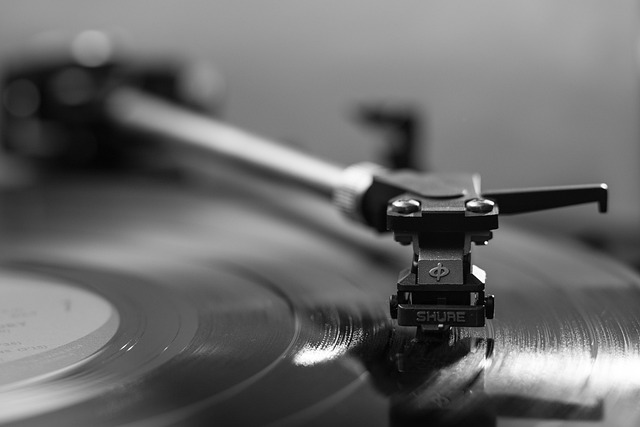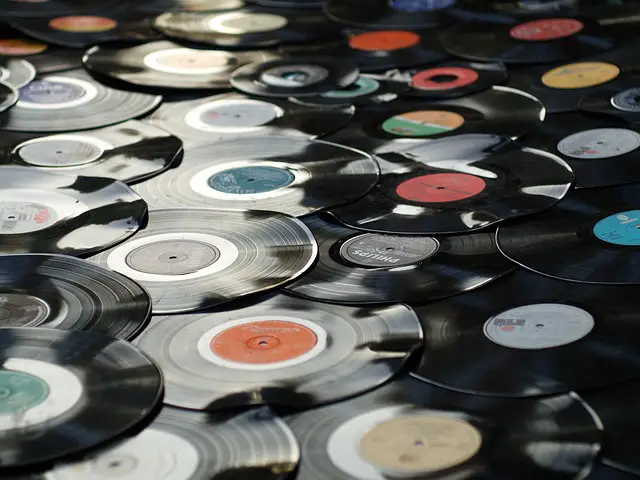Exploring the Impact of Music in Film Soundtracks That Shaped Cinema
Music is just more accessible and sharing than ever. Despite this, vinyl sales and listening are on the upswing.
Vinyl Part
Nowadays, there are several methods to listen to your favorite music. To enjoy yours, you may use one of the various digital streaming systems available, such as Spotify, Amazon Music, Apple Music, or others. You may still prefer to listen to music on tangible media, such as CDs or cassettes, but there is one medium that stands out for its popularity and cultural significance: vinyl.

The ease of digital listening is often overlooked. To seasoned listeners who grew up in the vinyl era, digital streaming must seem like a tectonic upheaval. It’s like magic—any music, anytime, anyplace. Music is just more accessible and sharing than ever. Despite this, vinyl sales and listening are on the upswing. So, why is vinyl, a medium that requires such a meticulous listening regimen, still having an influence on today’s musical scene, for both younger and older listeners?
What makes vinyl so special? Is it the warm sound and excellent quality it provides, the ritualistic act of carefully removing the record from the sleeve, placing it on the turntable, and gently lowering the needle into the grooves, its historical significance, or the desire to build your own impressive record collection?
It might be vinyl’s distinctive sensory experience. The feel of the disk, the process of putting on your favorite album and looking at the artwork from front to back while listening. That fragrance of newly unboxed vinyl, as well as vintage, pre-loved eBay collectibles with stories much deeper than the musical grooves inscribed on them. From the sound to the touch, smell, and appearance of vinyl, there is undeniably an emotional connection to it.
In this two-part blog series, Bowers & Wilkins delves into the technical and cultural aspects of vinyl, examining the ‘how’ and ‘why’ of music’s most famous medium.
Vinyl
From Pellets to Performance
So, what precisely constitutes a vinyl record? We all know what one looks like, but there’s a lot more to say about how it gets from the manufacturer to your turntable.
To put it simply, vinyl records are plastic discs that are spun at a steady speed and read by a needle that traces each groove inscribed in the plastic, each containing musical information.
They are composed of polyvinyl chloride (PVC), a high-strength thermoplastic polymer formed by mixing chlorine and ethylene with additions using different processing procedures. The PVC needed to produce vinyl discs often begins as pellets, which are sent to wherever your new vinyl record is being pressed.
Before your PVC pellets are turned into gorgeous vinyl, the makers will need a physical master of the recording that will be pressed into vinyl – the master record.
While the master record is derived from a digital master of the completed song, the mastering process is often the last step in the creation of a song or album. A mastering engineer must take the final mixdown of the music in premaster format, which is typically between -6dB and -12dB, and apply processing methods such as EQ, limiting, and stereo imaging. This improves the overall sound quality and enables the volume to be increased for streaming, CD, and vinyl listening.
Expert insights.
Geoff Pesche is an Abbey Road Studios mastering engineer who has worked on some of the world’s most renowned songs, including those by Gorillaz, Kate Nash, Coldplay, Basement Jaxx, Amy MacDonald, Kylie Minogue, New Order, and others. He took time out of his demanding schedule to chat with Bowers & Wilkins about the mastering process.
According to Pesche, “mastering is the last link in the production cycle, connecting the studio to the store or online retailer. So, this is the last option for changing the sound of a format before it is made. We’re working on sequencing, tonal balancing, final editing, and sometimes having a disagreement with the band!”
Geoff Pesche
Trust the process.
A mastering engineer adapts a digital master to make sure there are no limitations on the recording and that the frequencies and sound quality are optimized for vinyl listening (and any other medium).
Once the digital master has been enhanced and made vinyl-ready, a blank acetate disc coated in lacquer or, more commonly in today’s industry using Direct Metal Mastering (DMM), a copper disc, is placed on the lathe of a recording machine and engraved with the audio signal from the master recording using a heated stylus. Because one side of a 12-inch vinyl record may hold up to around 20 minutes of music, the acetate or copper disc is flipped halfway through, and the procedure is repeated for the remaining music to make the B side.
Following the engraving, the lacquer disc is sprayed with tin chloride, followed by a liquid silver coating to aid in electrical conductivity. It is then immersed in a bath of electrified water containing dissolved nickel, allowing the nickel to fill the finely cut grooves. This procedure produces a negative of the cutting with a metallic shell that may be utilized to press all of the vinyl you need. If you’re using a digital multimeter, you may skip this step since the copper disk used in this technique is already electrically conductive.

Now that the vinyl stamper has been prepared and a central hole has been punched to enable it to adhere snuggly to the vinyl press, it is time to begin pressing the record. The PVC pellets that make up the vinyl’s plastic are heated and fused into vinyl patties (also known as vinyl biscuits), and the circular artwork seen in the center of most vinyl records is applied.
The vinyl biscuit is then put on the vinyl press, where 100 tons of pressure behind the stamper descends at very high temperatures, pressing the negative stamper into the PVC biscuit. Once the vinyl has been correctly pressed, it is taken to a cutting table to smooth down any rough edges before being packed and distributed to music fans all over the world.
Different speeds mean different advantages.
However, not every vinyl is pressed to play at the same pace. If you’re not acquainted with RPM, it stands for Revolutions Per Minute, and it refers to how many times the platter on your turntable revolves entirely every minute. Most vinyl records are cut at either 45 RPM or 33 1/3 RPM (formerly 78 RPM).
The quicker a record spins, the less information it can store, therefore the playtime is reduced. So, 33 1/3 RPM is the most convenient for lengthier records since it needs less trips to your turntable to flip the vinyl. While 45 RPM recordings, often 7-inch vinyl or 12-inch singles, may hold less audio information because they play quicker, the increased speed of vinyl playing increases overall sound quality for listening. When the vinyl plays at a higher RPM, it rotates beneath the stylus faster, allowing more audio information to go from the stylus to the speakers.
We discovered more about this when chatting with Pesche: “With a record, the inner circumference is turning slower than the outer circumference, even though turntables go at a universal speed,” he adds.
“The squeeze effect occurs in the midst of a record. Because it is spinning slowly, the pickup’s reaction will be weaker and less effective than the outside circle. So, clearly, by 45, things will be better.”
In addition to the popular 33 1/3 RPM and 45 RPM, the earliest records were made at 78 RPM. This was designed for ancient phonograph players, which used a manual crank to spin the record. The usual user was thought to spin the crank at roughly 80 RPM, thus the choice of 78 RPM.
Although there are many record speeds to consider, believe that the engineer behind the record has chosen the greatest option for the artist so that their music is given as near to the original recording as feasible.
Hold on, weight for a minute
You’ve undoubtedly observed that various weights of vinyl are available, just as there are varying RPM standards for vinyl pressing. The normal vinyl weight ranges from 120 to 140 grams, however thicker 180-gram vinyl is also available and preferred by some.
Many believe that the substantially thicker 180g vinyl produces stronger bass, more detailed high frequencies, and less noise. While this is true for most 180g pressings, it is not always dependent on the weight of the record. The reality is that firms normally put more effort into the total production process of 180g pressings, finding superior material for the vinyl, such as clearer masters of the original recording.
Pesche provided some insight into whether it is indeed as vital as some believe, stating that “What you really need is a flat pressing.” You need one that won’t warp. And some of the lighter ones do not warp if you keep your records, but many believe that larger is better.”
However, there are several advantages to using 180g recordings. They’re stronger, which minimizes the likelihood of them fracturing or warping, and the extra weight provides a more stable base for the stylus to rest on.
Vibrant vinyl or classic black?
In the early days of vinyl, black records were the only choice available, and fortunately, they provided excellent audio quality. The black pigment in the PVC allows the vinyl to absorb undesired sounds and hisses, making it the most practical choice for producers and listeners. For many years, colored vinyl was less common, and although it appeared more appealing, the dyes and pigments added to the PVC to give those brilliant colors may cause the vinyl to distort, make noise, and have other flaws.
However, as technology evolved, producers were able to make vinyl free of these difficulties owing to higher-quality pigments and dyes, as well as current pressing procedures that prevent undesirable warping. So, whether you want traditional black vinyl or multi-coloured counterparts, you won’t have to sacrifice sound quality. Good news for collectors who like the uniqueness of limited color presses and adding those sought-after special editions to their record collection.
In addition to the increasingly popular colored vinyl, you can now obtain vinyl with special graphics on it, known as Picture Discs. Picture Discs, made by sandwiching a printed image between two layers of transparent vinyl, are more visually appealing than normal black or colored records, but they have drawbacks. Housing anything between two layers gives little space for error. Even the tiniest uneven surface may cause the vinyl to warp, and even little warping can have a negative impact on the sound quality. So, if terrific sound is your first priority above attractive Picture Discs, stick to traditional black or newer colored vinyl.
From recordings to high-resolution
Now that we’ve covered the fundamentals of what vinyl is and how it’s manufactured in its many formats, let’s look at how it works to produce high-resolution music. To play vinyl, you’ll need a turntable, preamp, amplifier, and speakers, as well as an isolation platform if you’re concerned about vibrations from the surface on which your turntable stands.

Although the way vinyl works is universal, the equipment you use to play it affects the quality of your listening experience. So, if you’re serious about excellent sound, spending money and effort in a good setup can help you get the most out of your recordings in the long term. In other words, the effort you put into your listening arrangement will be rewarded by the delight of exquisite sound.
The way records function has remained substantially unaltered since the invention of phonographs and gramophones. After placing the vinyl on the turntable, a diamond-tipped needle, known as the stylus, is delicately raised and dropped into the first outer groove of the record.
Vinyl and Speakers
Setup is everything.
First and foremost, make sure your record player is set up on a flat, vibration-free surface. This is particularly critical if you live in a home with sprung hardwood floors. A wall mount or an isolation platform for your turntable might be necessary add-ons to get the desired results; otherwise, your records may continually skip in sympathy with the vibrations that flow through the floor into your turntable.
Next, ensure that your stylus’ tracking force is correctly adjusted. Tracking force is simply the weight of the needle, and you want to ensure that it has enough force to sit inside the grooves and precisely track the audio information on the vinyl while it plays.
The tonearm’s counterweight may be changed to give your needle the ideal weighting for optimal performance. You should be able to obtain the recommended weighting for your counterweight by conducting a fast Google search or looking through your turntable’s manual. Correct tracking force ensures that your needle does not bounce during playback, maintaining your records in good condition and delivering your music with precision and accuracy. It’s crucial to realize that every record player is unique in this regard, with radically varying degrees of intricacy.
As the turntable spins the record, the stylus passes over the grooves that contain the audio information from the master record. The left side of the groove produces the left sound, while the right side produces the right sound, which is another reason you’ll need to ensure your needle tracking is proper. This movement causes the needle to vibrate, which is then transmitted up the cantilever to a cartridge, which is a form of electromechanical transducer that contains a magnet between two coils. The left and right coils provide electrical impulses from the left and right channels, respectively, and the magnet vibrates between these coils to generate a stereo signal.
The phono stage is crucial.
The coil signals go up the record player’s tonearm and into the turntable’s circuitry. This is when the phono stage, sometimes known as a preamplifier, comes into action. At this point, the signal from your record is quite quiet, therefore it requires additional power. The preamplifier links your turntable to your amplifier, boosting the signals for increased amplification. Some of today’s record players have built-in phono stages, which is great for the casual vinyl listener, but for those who want to hear the nuances in their music in greater detail, an external phono stage or a high-quality phono stage built into your amplifier often provides better quality, high-resolution sound from your vinyl records.
When the signal reaches the amplifier, it is amplified and divided into left and right channels, enabling your left and right speakers to produce stereo sound. The loudspeaker’s transducer converts audio signals from the amplifier and prepares them for output. The speaker cones then vibrate, traveling forwards and backwards to produce the soundwaves we recognize as music.
To summarize, the way vinyl works hasn’t changed much, but now, with all of the exceptional audio technology available, there are ways to make the most of your treasured records – you’ll need to spend some time setting up your ideal hi-fi system and keeping your records and equipment in good working order.
Good habits and pleasant records.
Caring after records is an integral component of every vinyl enthusiast’s lifestyle. Clean records last longer, sound better, and look better, and if you’re looking to sell any of your collection, whether to improve your setup or acquire more records, you’ll probably get a better price for well-cared-for recordings.
Keeping your records dust-free is a great place to begin. Carbon fibre brushes are ideal for this and come highly recommended by vinyl professionals. The carbon fibre brushes are exceedingly small, removing minuscule dust particles from the vinyl grooves as well as static electricity. Clearing the dust will not only make your vinyl shine, but it will also avoid any unpleasant pops or crackles while listening since your needle will have greater grip on the record.
When storing your records, whether alphabetically, by genre, year, or colour – or, for lovers of the film High Fidelity, autobiographically – keep them upright in their sleeves in a dry, cold spot with sufficient breathing space between them to prevent them from being crushed or distorted. Again, this degree of arrangement and attention will make your albums sound better for longer and simpler to discover.
Vinyl and Speakers
caring about sound
As important as it is to preserve your vinyl in excellent condition, care for the equipment that plays your records is critical for both listening quality and vinyl durability. If dust accumulates on the stylus of your record player, it may create interference when connecting to the grooves of your vinyl, reducing playback quality and damaging records in the long term. You may maintain your stylus clean by gently removing dust with a stylus brush or, as seems to be popular in the music community, using an Onzow Zerodust Stylus Cleaner, which employs an ultra-soft gelatinous pad to remove dirt from the stylus tip. It makes logical sense: take care of your gear and it will last longer.
Of course, cleanliness is beneficial when it comes to equipment and records, but purchasing a nice turntable and properly setting it up is another critical component of superb sound. “Buy the best turntable you can afford,” suggests Pesche.
“You must have your turntable set up correctly. You can purchase an expensive turntable, such as a Rega Planar 8, but if it’s all weird, a Pro-Ject turntable for a few hundred pounds would sound better,” he says. “Spend some money on a turntable and have it calibrated. The other parts may be chopped and changed, but if you get a good turntable, it will last a lifetime if you take care of it.”
New life for ancient vinyl.
It’s intriguing to consider how vinyl nearly disappeared from the public when CDs, and later streaming, took over. However, with the increase in record purchasing, collecting, and manufacture, more time and effort has been devoted to the vinyl cause. To encourage the return of vinyl listening and the culture that surrounds it, several engineers and manufacturers have modified their methods to appeal to the current music fan – and their demand for the highest possible sound quality.
Stay faithful to the tapes
You may have come across the term’remastered’ when browsing through old recordings online or in-store. This simply implies that a sound engineer has revitalized a classic song or album using cutting-edge methods and new insights into the production process. It’s an excellent technique to bring fresh depth and clarity to your music. Geoff Pesche believes that maintaining loyal to the original master recordings is critical while remastering.
“The source material is the most important aspect of remastering. If you can identify the appropriate source material, you can go back to the basics and properly remaster it,” he explains.
When asked about his remastering experience, Pesche says, “I can appreciate the master tapes from back then because it would be simple to simply assume, ‘Oh, we’re in the 21st Century now, let’s crank all the treble up, let’s turn the bass up.’ Well, that doesn’t respect the original album, does it?”
Half the pace and twice the quality.
Half-speed mastering is one of these quality-enhancing techniques.
Although vinyl is now widely used, it was rather uncommon in its early days. Half-speed mastering goes back to the 1960s, when British record company Decca recordings used the technique to increase the dynamic range and frequency response of vinyl recordings. Half-speed mastering is exactly what it sounds like: the same basic vinyl-cutting process is used, but each step is slowed down to half-speed to assist generate a more detailed master record.
However, let the professionals provide some insight into this. When asked about the half-speed mastery approach, Pesche said, “The fundamentals are wonderful. The highest frequencies on a record are the most difficult to cut. It is simpler to cut a signal at 1000 kilohertz than it is to cut something at 16,000 kilohertz, so if you halve the signal’s speed, all of the time components – the cutter head, the cutting rack, everything – need half the power. So it is working 50% less hard.”
So, when implemented, your digital master is played back at half the speed, while the cutting lathe etching the audio information into the lacquer disc or copper disc operates at half the speed. This doubles the amount of audio information that can be etched into the lacquer disc, resulting in more accurate, cleaner sound when played back on a record player.
While this is a tried-and-true way of increasing sound quality, half-speed mastered copies of original pressings revitalize older records and increase their uniqueness. It takes more time and costs more for producers, but the excellent sound quality, along with fresh artwork and any unique supplementary content, offers the ideal set of features for special edition releases that vinyl enthusiasts seek.
Reviving the Classics
In addition to remastered and half-speed mastered vinyl, sound engineers are often asked to add their magic touch and technical expertise to the mixdown of a previously released single or album. This is remixing, not the skill of creating a remix of a popular tune. This sort of remixing concentrates on the individual pieces of the recordings, known as stems, such as vocals, bass, drums, and so on, fine-tuning how each portion of the song fits into the overall mix. Tweaking the frequencies of these individual components, utilizing new tools and methods, may improve the overall sound of the record by allowing various portions of the mix to shine through for a cleaner, more musically balanced sound.
Techniques like these bring us closer to the music we love, and remixed versions, like half-speed mastered vinyl copies, are in great demand for this same reason. Consider Giles Martin’s remixed rendition of the legendary Beatles album Let It Be, for instance. Giles, the son of George Martin, the Beatles’ original producer, reconstructed the album with a new stereo mix that included a Dolby Atmos-specific mixdown. This prized version of the album was published as a CD and vinyl special edition, including a book of session notes, images, and essays by Paul McCartney, as well as an EP of previously unheard music.
It’s clear that, while many of these remastered and remixed records, which include a plethora of exclusive features, are a surefire way of re-releasing and selling existing records, they also benefit the listener by providing optimized quality and serving as exclusive showpieces for their record collections.
Record a retrospective
Vinyl has a distinct identity. There is much to admire in its sophisticated production and listening processes, as well as its historical and cultural relevance. The fact that more individuals are getting into vinyl listening – and creating their own record stores – in the digital era of music says loudly about its value in the musical landscape. Despite having every song and album at our fingertips, we continue to gravitate for tangible media and the ritualistic routines it imposes, and this trend shows no signs of diminishing.
We’ve covered the ‘how’ and ‘what’ of vinyl; in our next in-depth look at vinyl, we’ll go over the ‘why’, digging into what makes vinyl and the culture that surrounds it so distinctive, emotive, and long-lasting.






